Overclocking
Before overclocking right away, we double checked three DDR3 memory kits clocking in at 1600MHz, 2000MHz, and 2133MHz to see if the platform can handle XMP profiles up to the platform’s supported 2200MHz. There weren’t any problems with 1600 or 2000MHz. However, 2133 to 2200MHz is going to require a hands on approach to reach that frequency.
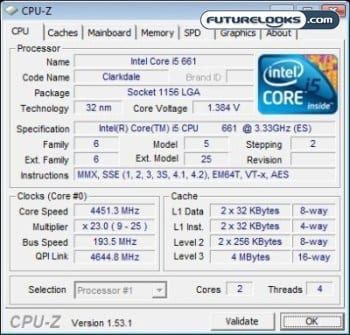
The EVO software was great up to about 170 to 175 CPU Bus Speed depending on the voltages picked. Anything higher was unstable pointing to some of the OS’s limitations. Getting our OC on through the BIOS produced much better results topping out at 180MHz with Auto and OC selected BIOS options.
In the end, it appears the CPU held back the system a bit. We were able to hit 193 CPU Bus bringing the processor to a very healthy 4.45GHz at 1.385 VCore and manually applying 1.65 volts to the memory. Yep, that should do just fine. Now on with the benchmarks!
PCMark Vantage
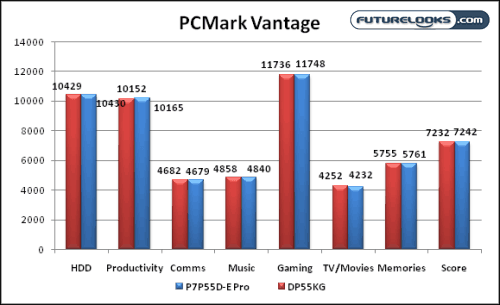
There’s not much excitement here. The reference and Pro platforms offer a little give and take most likely due to enabling the Turbo Tech feature. The Pro is a bit more aggressive in the end.
SANDRA CPU
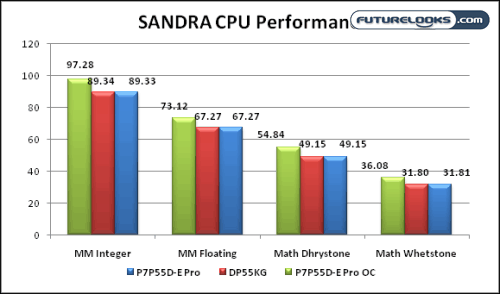
Again, we see the Pro steps ahead just a bit no doubt due to its more aggressive tuning. The overclocked results were much better and give you an idea of the Pro’s capabilities. Suffice it to say, the DP55KG couldn’t match the Pro, so they weren’t included.
3DMark Vantage
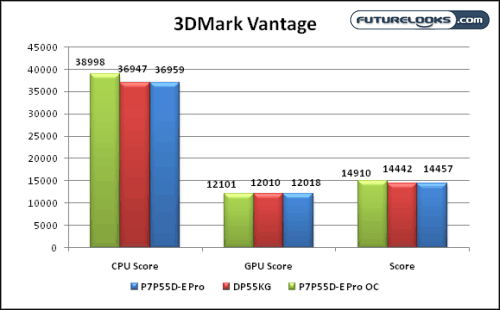
Once again, the Pro just passes the KG all around. Plus, the Pro transforms the Core i5 661 into a new processor when overclocked. Pretty impressive to say the least.
Cinebench R11.5
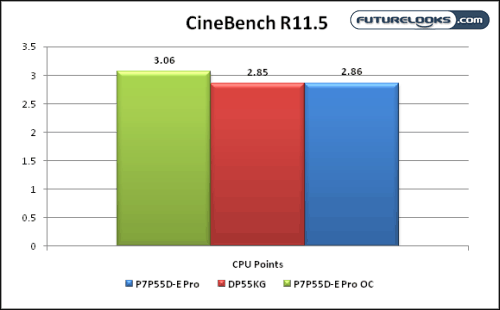
It’s going to take some time getting use to the Cinebench R11.5 point scoring system. Even though we’re only talking about pennies here, you get an idea of where the Pro scores in regards to the reference board.
